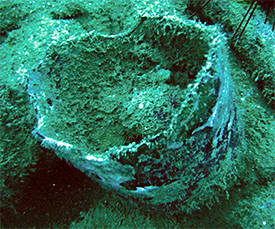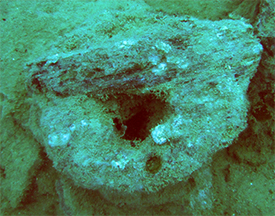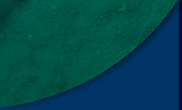
Crew Impressions
30 November 2008
By Michael Tuttle

In situ bottle base on site.
Historical Archaeology is an interesting activity. Conducting dive training with local students and archaeological site investigations on the other side of the world adds another dimension to the process. The dive training went well and hopefully will form the nucleus of a group that will aid in protecting Madagascar's rich underwater cultural heritage. The wreck site recorded offers tantalizing indications as to its origins. Although the depth of the remains limited the time a diver could spend on site enough observations were made to indicate the the remains represent a late 18th century vessel.
The anchor is a classic 18th century design. The copper bottom sheathing is a great terminus ante quem, indicating the vessel could not be constructed prior to the 1760's. Lead ballast bars located near the west end of the remains are another great diagnostic artifact. The cannon associated with the site indicate the belligerent nature of the ships purpose in the Indian Ocean. There are many other artifacts, glass bottles, ceramic, metal, concretions, on the site that can provide information if recovered and properly conserved and analyzed. The site offers a wealth of information. The only artifact that is missing is a ship's bell to positively identify the site.
Historic documentation indicates that the Serapis caught fire and sank in the Harbor at Ambodifotatra. As a warship, cannon would definitely be on the vessel. Copper bottom sheathing was a technological innovation incorporated to protect the ships hull.

Possible burned wood.
We came looking for the remains of the Serapis, the prize of John Paul Jones in the greatest single ship to ship naval battle of the American Revolution. Indications observed on the site are very encouraging, but archaeological conservativism will reign until artifacts are analyzed and historic documents checked and rechecked before any definitive statement can be made. However, as work on the site has taken time and research continues I am patiently optimistic.
Please feel free to contact us at mua@keimaps.com with any comments, questions, or suggestions during the weeks to come.
Return to Project Journal home page.


